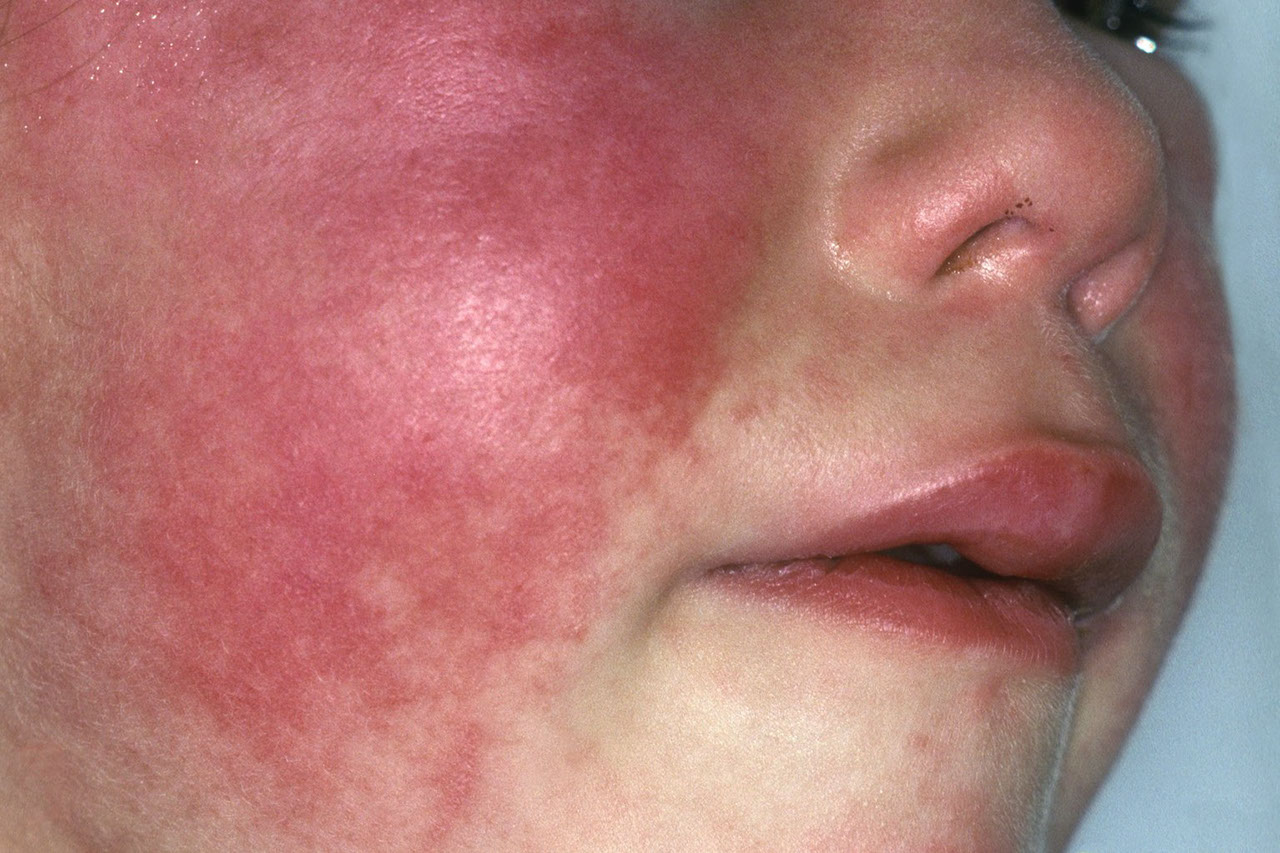What Is Scarlet Fever?

Children who get a red rash and a fever may have scarlatina, a bacterial infection that can lead to rheumatic fever, kidney disease, ear infections, and pneumonia.
What is scarlet fever?
Scarlet fever is an infection with the same bacteria that causes strep throat, also known as group A Streptococcus. There is no vaccine, but scientists are looking for one.
Scarlet fever devastated families in the 1800s, when even small children had to be isolated for weeks. Their clothes and bedding were burned to prevent the illness from spreading within the family. As late as 1914, the illness, also called scarlatina, killed almost 5 percent of those infected, mainly children between the ages of five and 15.
After about 1945, antibiotics made scarlet fever far less dangerous. But there have been recent scares. The number of cases has begun to rise around the world, mostly in schools and nursery schools.
Rarely, adults exposed to children with scarlet fever may also get condition.
YOU MIGHT ALSO LIKE: Is Strep Throat Contagious?
What are the symptoms of scarlet fever?
The tell-tale sign of scarlet fever is a red blotchy rash that becomes rough, like sandpaper. You can see a photo here. On darker skin, the rash may be hard to see, but you can feel it. It can begin before other symptoms make your child feel ill or up to seven days later.
It usually shows up first on the neck, groin, and under the arms. Sometimes the folds of skin in the armpits, elbows, and knees are a deeper red.
After seven days, the rash usually fades, but the skin on the tips of fingers and toes and in the groin may peel over weeks.
Your child’s face may be flushed but not bumpy.
Another obvious sign is a strawberry tongue with a bumpy white coating that peels after a few days and leaves the tongue bright red.
Other possible symptoms are familiar from strep throat:
- Pain when swallowing
- Fever above 101 degrees
- Red or swollen tonsils that might also have white patches
- Tiny red spots on the roof of the mouth
- Swollen lymph nodes in the front of the neck
Children with scarlet fever may have a headache and stomach pain and become nauseated and vomit. They may get a skin infection called cellulitis, which is not the same as the rash.
How does scarlet fever spread?
Group A strep live in your nose and throat. You might be infected and not have symptoms or feel sick. If you cough or sneeze, tiny drops leave you and carry the bacteria to other people.
Just like with strep throat, other people can get sick if they breathe in those droplets or touch something with the droplets on it and touch their nose, mouth, or eyes. You can also get it if you share a glass or eat from the same plate as someone who is infected or touch a patch of cellulitis. CTouching the rash won’t spread the bacteria, however.)
The bacteria produce a poison that causes the rash. If you have scarlet fever, the bacteria has spread beyond your throat.
What are the complications of scarlet fever?
In most cases, antibiotics will take care of the rash and other symptoms in 10 to 14 days. Possible complications include rheumatic fever (a heart problem), kidney disease, ear infections, pneumonia (a lung infection), or arthritis.
The best way to avoid complications is prompt treatment.
Diagnosis and treatment of scarlet fever
Your child’s doctor will recognize the rash and other signs of illness on your child’s tongue, throat, and tonsils. A lab test of cells at the back of your child’s throat, taken with a throat swab, will identify group A strep. Your doctor can do a rapid throat swab test in the office, but it may miss some cases.
The standard treatment is antibiotics and, depending on your child’s age, over-the-counter pain relievers like acetaminophen (Tylenol) or ibuprofen (Advil). Aspirin is not recommended because of the risk of Reye’s syndrome.
Ask your child’s doctor whether it is okay to use over-the-counter anti-itch creams.
Eating ice pops, ice cream, or warm soup can soothe a sore throat. So can gargling with salt water and using a cool air humidifier. Your child should drink plenty of liquids and can try soft foods or stick to soup if eating is painful.
It’s also important to stay home at least until the fever goes away and your child has taken antibiotics for at least 24 hours.
Updated:
September 28, 2023
Reviewed By:
Janet O’Dell, RN